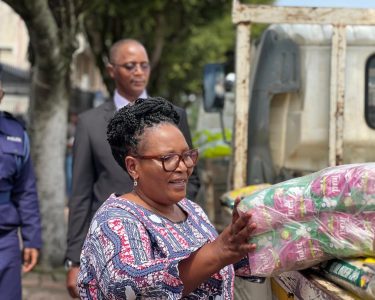
By Ntombi Mhlongo
As the calls for a review of the Orphaned and Vulnerable Children (OVC) education grants grow, the government would need to fork out around E150 million a year to make this a reality.
The call to have education grants for OVC has been there for years and this year is no different as the Eswatini Principals Association (EPA) has raised it again.
Currently, there are about 60 000 beneficiaries of the grants, and the requests are filed by various secondary and high schools. The figure has been stagnant for years sitting at E1 950 per beneficiary.
Due to the escalation of prices and overall financial challenges faced by schools, head teachers have decried that it was now difficult for them to operate.
Their wish is that the grant should at least be E2500 per beneficiary or even more. The argument by the head teachers is that the OVC grants should be used to cover the full cost of education yet the current situation is structured in such a way that the money provided currently covers the cost of tuition, examinations, and books for OVC students but does not cover the costs of hostels, uniforms, transport, educational trips, and extra learning.
Every year, the Deputy Prime Minister’s Office received a list of pupils expected to benefit from the OVC Education Grants. The list is submitted through the Regional Education Offices (REOs) after which the capturing and finalisation of the grants beneficiaries list is done.
In the DPM’s Office Annual Performance Report for the Year 2021/2022, it was revealed that the office has realised a significant increase in the number of schools that submitted claims for OVC payment requests.
In the report, it is reflected that the number had increased from 268 secondary schools to 273.
The beneficiaries were about 60 371 with about 27 602 registered to write external examinations for Form 3 and Form 5. The increase in the number of beneficiaries was largely because many parents lost their jobs due to the Covid-19 pandemic.
Interviewed by the Eswatini Financial Times, EPA President Welcome Mhlanga said, “The ministry commissioned teams to do studies on the issue of high school fees for purposes of standardisation. This study or studies would be a good benchmark for determining the revision of the OVC grant,” he said.
Asked about the exact need to have the grant increased Mhlanga said, “What we do know is that the E1950 covers far too less considering the effects of inflation over the almost 20 years since the introduction of the grant. As an association, we are available for further consultation on the subject.”
It was in 2006 that the Kingdom of Eswatini launched a comprehensive policy to deal with its rapidly expanding population of orphans and vulnerable children (OVC).
The US $234.7 million National Plan of Action (NPA) sought to address the health and education needs of OVC and coordinate the efforts of NGOs and government agencies, to prioritise resources and prevent duplication.
At the time, it was argued that the NPA’s priority was to ensure places for OVC in schools which was why the focus was on engaging teachers to find an amicable solution to address what had become an outcry that fees in schools were too high yet there was a need to accommodate the OVC.
An economist interviewed by the Eswatini Financial Times concurred that the grants needed to be increased as there were many expenses that schools had to take care of.
“As you may be aware, schools have in the past years been asking parents to try and fork out more money as the grants were not enough. My view is that government needs to put more effort into getting donors that will assist. This I say because we know that our government has financial challenges. We know that organisations like UNICEF and European Union always support us, let us get more of such organisations to help us,” the economist said.




